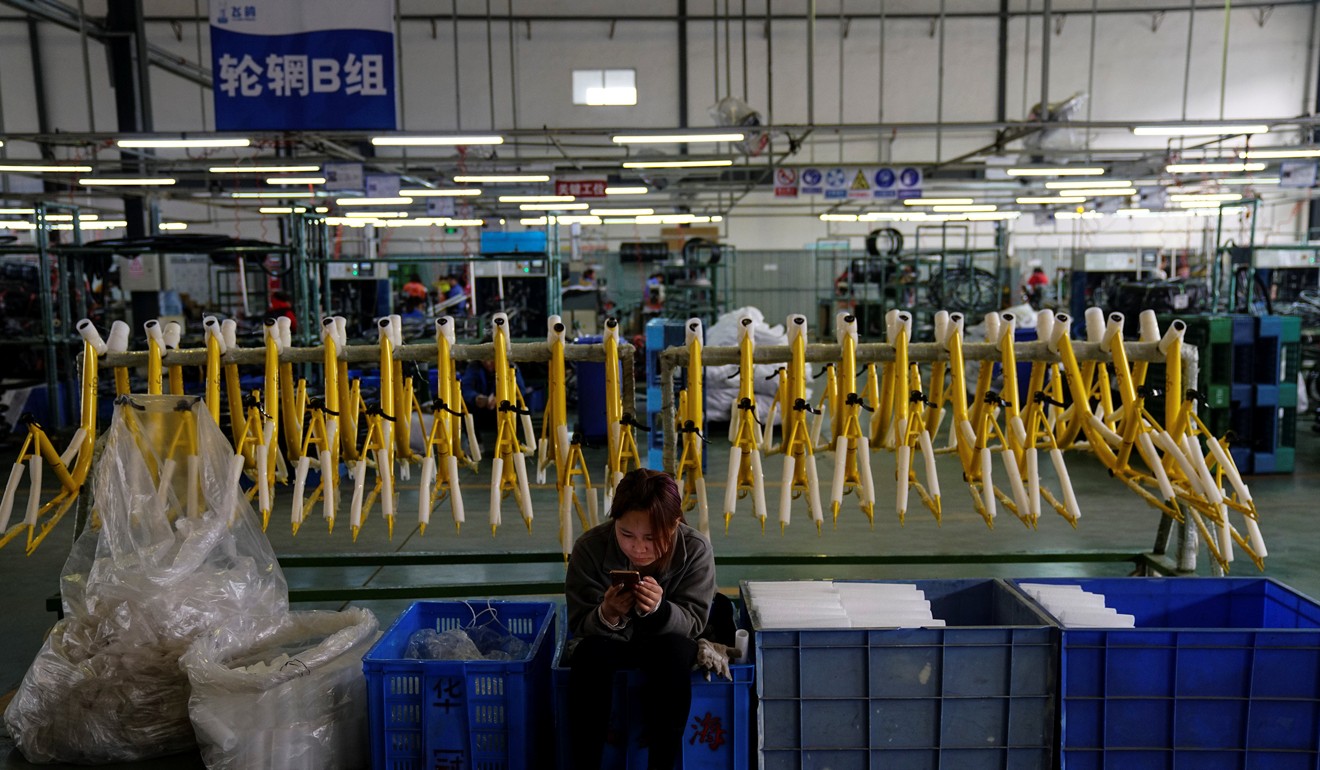
China’s economy slows further as manufacturing contracts for first time in two and a half years
- Purchasing managers’ index falls to 49.4 in December putting more pressure on China to make concessions to ease the trade war with the United States
- Drop in manufacturing activity partly offset by stronger service sector
China’s economy slowed further in December, with data released on Monday showing manufacturing sector activity contracted for the first time in two and a half years.
The purchasing managers’ index (PMI) fell to 49.4 from 50.0 in November, with December falling below the watershed point between expansion and contraction in the sector for the first time since dropping to 49.9 in July 2016.
It was also the lowest since hitting 49.0 in February 2016.
"The falling PMI points to further pressure on the economy in the fourth quarter and the first quarter of next year. We expect the future policy will focus more on counter-cyclical adjustment to stablise demand," said Li Chao, chief macro analyst from Huatai Securities.

The drop in manufacturing activity was led by a contraction in export orders for the seventh straight month to the lowest level since November 2015.
Iris Pang, Greater China economist from ING Wholesale banking, noted that it is not too surprising that new export orders contracted to 46.6 in December under the lingering trade war, since it had remained below 50 since June.
But with new orders, that includes both domestic and export, dropping below 50 to 49.7 for the first time this year, this shows that the economy is not running well, she said.
"December is not a typical silent month for China [in term of economic activity]. So it's quite unusual to have domestic orders also slowing down," Pang said.
"If you combine it with last week's industrial profit data [which fell for the first time since 2016], it proves that the domestic economy is in a bad shape."
The decline was partly offset by activity among non-manufacturing firms, mostly service sector companies, which picked up in December, with the index rising to 53.8 from 53.4 in November.
The November index was the highest since reaching 54.9 in September, and was stronger than expected, with Bloomberg’s survey forecasting a small drop to 53.2.
Combined with weaker sentiment data in October and November, the December numbers suggest a further slowing of Chinese growth in the fourth quarter from the 6.5 per cent posted in the third quarter.

The official composite PMI, which measures sentiment among Chinese manufacturing and service sector firms, fell to 52.6 in December from 52.8 in November, the National Bureau of Statistics said.
The December level was the lowest since the composite series began in January 2017.
Analysts expect growth to slow significantly in the first half of 2019 when the full impact of tariffs imposed by the United States hit the Chinese economy.
At the meeting of the Central Economic Work Conference last week, top officials agreed to take steps to boost the economy next year, including additional tax cuts and infrastructure spending.
The Trump administration has threatened to raise the tariff rate on US$200 billion of Chinese exports to 25 per cent from 10 per cent if a March 1 deadline for a comprehensive trade deal is not met.
“Looking to the future, the direction of the renminbi will depend on two factors, the direction of the US dollar and the development of the Sino-US trade war. There are reports that China and the United States will restart negotiations in early January,” said OCBC-Wing Hang Bank economist Carie Li.
“The recent downward pressure on the Chinese economy has increased, so if the central bank’s deepens its easing position, it will weaken the renminbi.”

